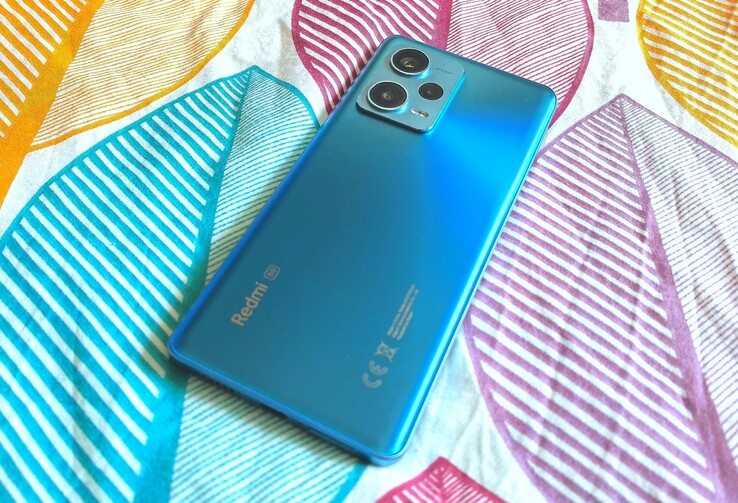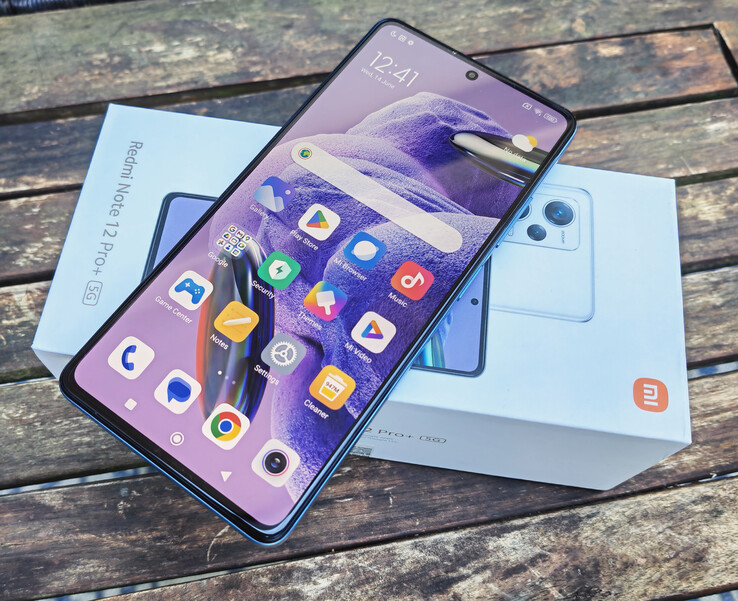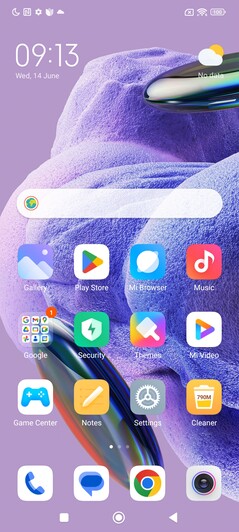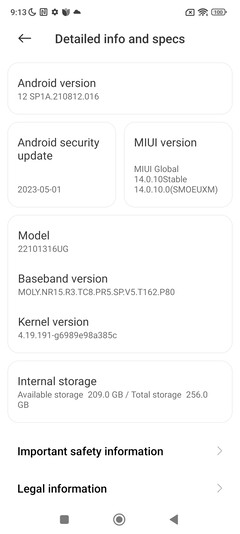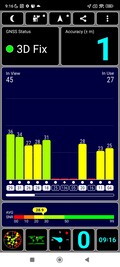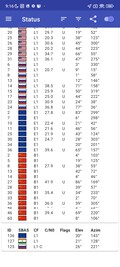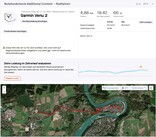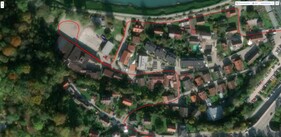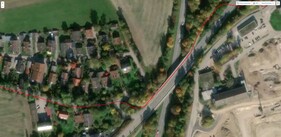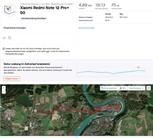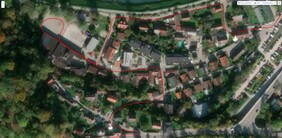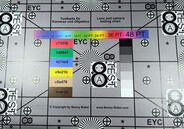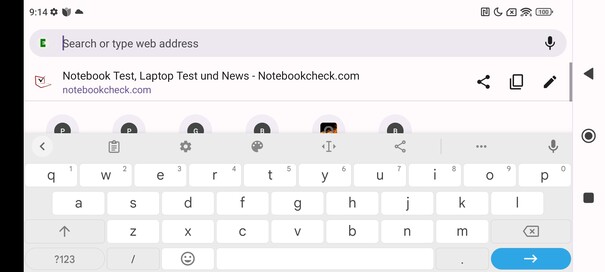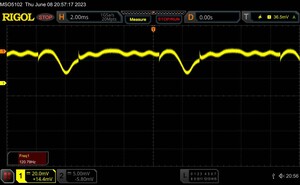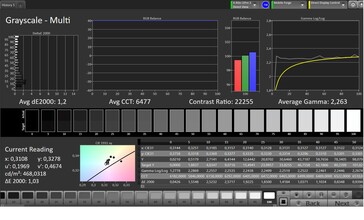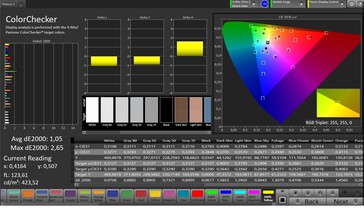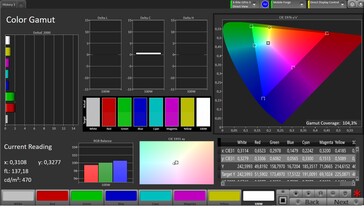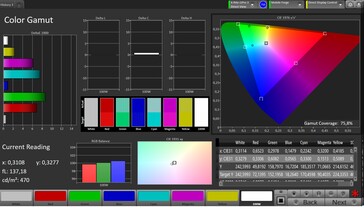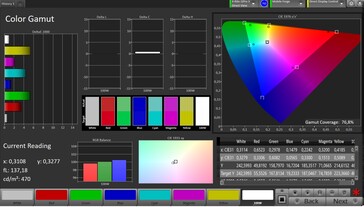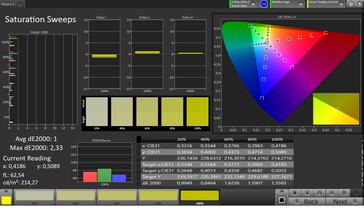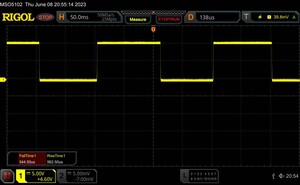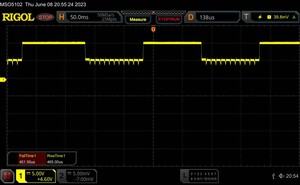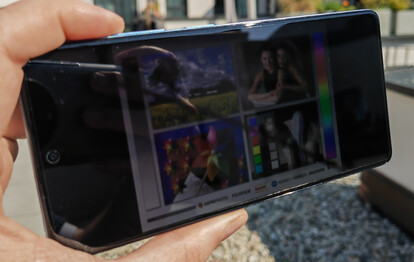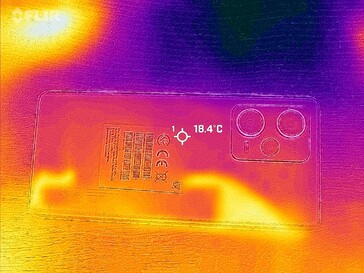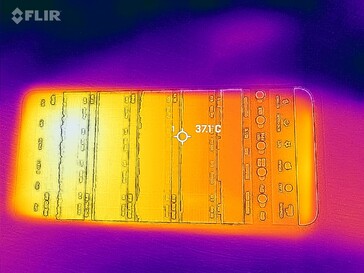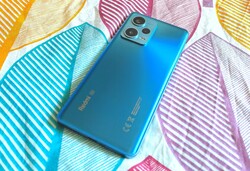Xiaomi Redmi Note 12 Pro+ 5G smartphone review: 200-megapixel camera in the midrange
Last year Xiaomi launched the Redmi Note 11 Pro+ 5G, an even faster and more expensive model of its popular Redmi Note series. But the features did not really compensate for the high surcharge.
This year everything is supposed to be different: The Redmi Note 12 Pro+ 5G uses the same SoC as the Note 12 Pro 5G, but also offers considerably more advantages with super-fast charging technology, more storage and a 200-megapixel main camera with OIS.
A surcharge of EUR 70 (~US$75) seems quite fair at first glance. Of course, our review examines whether this surcharge is really justified i.e. whether the device really loads that much faster, whether the pictures really look better and whether the Redmi Note 12 Pro+ can compete against similarly price smartphones from other manufacturers.
Possible competitors in comparison
Rating | Date | Model | Weight | Drive | Size | Resolution | Price |
|---|---|---|---|---|---|---|---|
| 85.1 % v7 (old) | 06 / 2023 | Xiaomi Redmi Note 12 Pro+ 5G Dimensity 1080, Mali-G68 MP4 | 210.5 g | 256 GB UFS 2.2 Flash | 6.67" | 2400x1080 | |
| 85.4 % v7 (old) | 04 / 2023 | Xiaomi Redmi Note 12 Pro 5G Dimensity 1080, Mali-G68 MP4 | 187 g | 128 GB UFS 2.2 Flash | 6.67" | 2400x1080 | |
| 86 % v7 (old) | 05 / 2023 | Samsung Galaxy A54 5G Exynos 1380, Mali-G68 MP5 | 202 g | 128 GB UFS 2.2 Flash | 6.40" | 2340x1080 | |
| 81.7 % v7 (old) | 11 / 2022 | Nokia X30 SD 695 5G, Adreno 619 | 185 g | 128 GB UFS 2.2 Flash | 6.43" | 2400x1080 | |
| 85.8 % v7 (old) | 09 / 2022 | Google Pixel 6a Tensor, Mali-G78 MP20 | 178 g | 128 GB UFS 3.1 Flash | 6.10" | 2400x1080 |
Case - Heavy phone with Gorilla Glass 5
Visually, even experts will have a tough time distinguishing between the Redmi Note 12 Pro and the Note 12 Pro Plus: the same colors are available and the configuration of the camera lenses are also exactly the same.
Our test device comes in blue, so it has a shimmering matte back, while black and white come in a glossy finish. However, the case is almost a millimeter thicker and the Pro+ is significantly heavier. At 210.5 grams, it weighs a lot compared to other smartphones.
Moreover, the frame is made of plastic and the front is protected by Gorilla Glass 5. The smartphone is IP53 certified, namely dust- and water resistant. The Galaxy A54 from Samsung is IP67 certified, which means full protection against liquids, so it is clearly ahead.
Equipment - Plenty of space for data
256 GB of UFS 2.2 flash for data is generous for the price range, but not unique, as the OnePlus Nord 2T or the Nothing Phone (1) offered just as much storage last year, in some cases faster. On the other hand, the direct comparison devices fall behind here. You can get 8 GB of RAM in most smartphones for around EUR 500 (~US$500).
There is no microSD slot for memory expansion, but there are 2 SIM slots. However, the smartphone does not offer eSIM support.
Software - Ads and preinstalled apps
Xiaomi uses MiUI 14 as the operating system, which is still based on Android 12. System updates should be available up to Android 14, security patches until 2027. In the case of the latter, experience shows that after a certain point they are only available every 3 months. At the time of review, the security updates were from May 2023 and thus still quite up to date.
Xiaomi's interface has changed in some respects compared to vanilla Android. The settings have been rearranged and sorted, and the drop-down menu for quick settings and notifications is separate, like in Apple. Apps receive a security check before installation, and the system double checks upon adjusting critical settings.
The system even displays ads in some cases, but this can be disabled if you know how. Xiaomi preinstalls many of its own tools and apps, including some third-party advertising apps.
Communications and GNSS – Lots of cellular frequencies
WiFi 6 is the fastest WiFi standard supported by the device. The speeds, in tandem with our Asus ROG Rapture AXE11000 reference router, are relatively low and fluctuating. At almost 750 - 800 MBit/s on average, the Redmi Note 12 Pro+ should be able to max out most home networks.
Numerous frequencies are supported in both the 4G and 5G networks, so you can also travel with the Redmi Note 12 Pro+. However, the device isn't a global smartphone since individual bands are missing. Signal quality was always good in random tests during our review, but the signal strength was not quite on the level of high-end smartphones.
Outdoors, localization is fast and precise with an accuracy of one meter. The smartphone uses all major satellite networks for positioning as well as SBAS to make tracking even more accurate.
To test the smartphone's real-world capabilities, we went for a bike ride and took the Garmin Venu 2 smartwatch for comparison. The Redmi Note 12 Pro+ traces the route taken very precisely and deviates only slightly from time to time. So if you're looking for a device well suited to everyday navigation, you can't go wrong here.
Telephony and Voice Quality - Trouble-free calls
Xiaomi uses Google's default app for phone calls.
The sound quality via the inbuilt earpiece is good. If desired, you can increase the volume so that the other party is quite loud, but it also overdrives. Overall, our conversation partner sounds a bit far away, but is always easy to understand. The microphone picks up loud and soft speech well and transmits it clearly to the person called.
Voices sound even clearer and more present via the loudspeakers, but are not quite as loud. The microphone also works well here, and the smartphone is able to filter out ambient noise as long as it is not too loud.
Cameras - Lots of megapixels and OIS
The main focus of the Redmi Note 12 Pro+ 5G is the main camera: the sensor comes from Samsung and has a gigantic resolution of 200 MP. The full resolution can be used, as well as a high-resolution 50-megapixel mode. However, 8 pixels are usually combined in order to achieve a higher light yield and to produce practical 12.5 megapixel images.
Thanks to the optical image stabilizer, you can take pictures without blurring in difficult situations. Our test images show good sharpness; you only notice the difference to high-end smartphone cameras when you examine the very bright and very dark areas, where better optics retain more details.
This is also the case in low ambient light, where the Note 12 Pro+ 5G cannot light up very dark areas as well.
Videos can be recorded in 4K and 30 fps via the main camera. Slow-motion videos with a slowdown of up to 32x are also possible, but only in 720p. The brightness adjustment lags from time to time, but the autofocus usually responds very quickly. Overall, the videos are of good quality.
The wide-angle camera takes decent pictures, but you shouldn't enlarge them too much, as the details then become mushy. The macro lens with 2 megapixels takes very close-up photos. However, the very low resolution makes them usable only for social media or direct viewing on the phone's screen at best.
A hybrid zoom between wide-angle camera and main camera is possible.
Image comparison
Choose a scene and navigate within the first image. One click changes the position on touchscreens. One click on the zoomed-in image opens the original in a new window. The first image shows the scaled photograph of the test device.
Main camera - flowerMain camera - surrounding environmentMain camera - low lightWide angleWe took a closer look at the imaging performance of the main camera in the lab: it is rich in detail and high in contrast, but the sharpness decreases a little towards the edges. At 1 lux illuminance, the chart is still clearly visible, but quite grainy in detail.
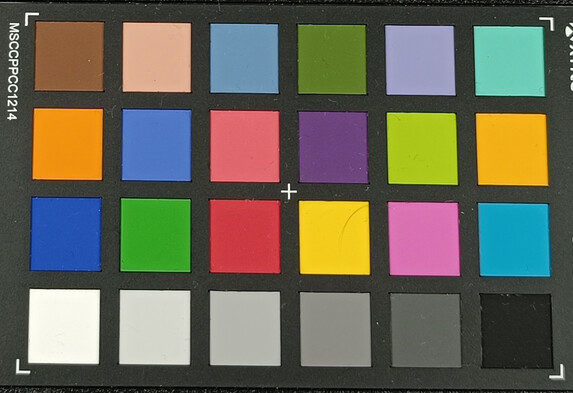
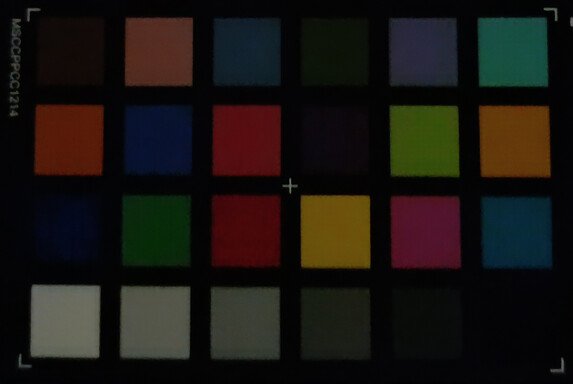
Accessories and Warranty - Fast charger included
In addition to the 120 watt charger, a USB cable and a SIM tool, the package also includes a silicone case for the mobile phone.
Xiaomi offers a 2-year warranty on the smartphone in the EU, which includes coverage of the battery and the power supply. This may differ in other regions, so buyers should double check before purchasing.
Input Devices & Operation - Precise fingerprint sensor on the Xiaomi
The touchscreen refreshes to 240 times per second, so inputs are very precise. Thanks to the frame rate of up to 120 Hz, commands are implemented very quickly.
The hardware buttons on the right side of the case have a clear pressure point. The fingerprint sensor is also located here, integrated into the standby button. It recognizes stored fingerprints very reliably and unlocks the smartphone with almost no waiting time. We like the fact that Xiaomi allows us to choose whether we only want to place the finger on it or whether the standby button actually has to be pressed to trigger the recognition.
Unlocking via face recognition is also possible. This is very convenient and also works smoothly in our tests, but it is not quite as secure due to the pure software recognition.
Display - Bright, color accurate, but unfortunately with PWM
The 6.67-inch OLED screen is the same as in the Xiaomi Redmi Note 12 Pro in all specifications and also achieves very similar results in our tests with CalMAN software and the spectrophotometer: an average brightness of 939 cd/m², which, however, barely shows any further increases in small illuminated areas. Nevertheless, the brightness is sufficient for HDR content.
We also measured PWM flickering at 121 Hz, so the display could cause problems for sensitive users. We therefore strongly recommend trying out the screen on low brightness before purchasing.
| |||||||||||||||||||||||||
Brightness Distribution: 94 %
Center on Battery: 942 cd/m²
Contrast: ∞:1 (Black: 0 cd/m²)
ΔE ColorChecker Calman: 1.05 | ∀{0.5-29.43 Ø4.78}
ΔE Greyscale Calman: 1.2 | ∀{0.09-98 Ø5}
104.3% sRGB (Calman 2D)
Gamma: 2.263
CCT: 6477 K
| Xiaomi Redmi Note 12 Pro+ 5G OLED, 2400x1080, 6.7" | Xiaomi Redmi Note 12 Pro 5G OLED, 2400x1080, 6.7" | Samsung Galaxy A54 5G Super AMOLED, 2340x1080, 6.4" | Nokia X30 AMOLED, 2400x1080, 6.4" | Google Pixel 6a AMOLED, 2400x1080, 6.1" | |
|---|---|---|---|---|---|
| Screen | 12% | -38% | -134% | -9% | |
| Brightness middle (cd/m²) | 942 | 938 0% | 940 0% | 693 -26% | 758 -20% |
| Brightness (cd/m²) | 939 | 939 0% | 935 0% | 709 -24% | 767 -18% |
| Brightness Distribution (%) | 94 | 96 2% | 99 5% | 83 -12% | 93 -1% |
| Black Level * (cd/m²) | |||||
| Colorchecker dE 2000 * | 1.05 | 0.9 14% | 2.4 -129% | 4.78 -355% | 0.9 14% |
| Colorchecker dE 2000 max. * | 2.65 | 1.6 40% | 3.2 -21% | 7.54 -185% | 2.5 6% |
| Greyscale dE 2000 * | 1.2 | 1 17% | 2.2 -83% | 3.6 -200% | 1.6 -33% |
| Gamma | 2.263 97% | 2.25 98% | 2.05 107% | 2.228 99% | 2.2 100% |
| CCT | 6477 100% | 6350 102% | 6422 101% | 7327 89% | 6599 98% |
* ... smaller is better
Screen Flickering / PWM (Pulse-Width Modulation)
| Screen flickering / PWM detected | 121 Hz | ||
The display backlight flickers at 121 Hz (worst case, e.g., utilizing PWM) . The frequency of 121 Hz is very low, so the flickering may cause eyestrain and headaches after extended use. In comparison: 53 % of all tested devices do not use PWM to dim the display. If PWM was detected, an average of 8101 (minimum: 5 - maximum: 343500) Hz was measured. | |||
Series of measurements at a fixed zoom level and different brightness settings
The OLED display performs very well in the more precise color reproduction measurements and does not show any major outliers. The screen can also be used for natural color assessment with the correct color setting "Standard".
Display Response Times
| ↔ Response Time Black to White | ||
|---|---|---|
| 1.1 ms ... rise ↗ and fall ↘ combined | ↗ 0.5 ms rise | |
| ↘ 0.6 ms fall | ||
| The screen shows very fast response rates in our tests and should be very well suited for fast-paced gaming. In comparison, all tested devices range from 0.1 (minimum) to 240 (maximum) ms. » 4 % of all devices are better. This means that the measured response time is better than the average of all tested devices (20.2 ms). | ||
| ↔ Response Time 50% Grey to 80% Grey | ||
| 1 ms ... rise ↗ and fall ↘ combined | ↗ 0.5 ms rise | |
| ↘ 0.5 ms fall | ||
| The screen shows very fast response rates in our tests and should be very well suited for fast-paced gaming. In comparison, all tested devices range from 0.165 (minimum) to 636 (maximum) ms. » 3 % of all devices are better. This means that the measured response time is better than the average of all tested devices (31.6 ms). | ||
Performance – Not the fastest in its price range
Compared to the slightly cheaper Redmi Note 12 Pro, the Pro+ brings no gains in terms of performance. After all, it runs on the same SoC in the form of the MediaTek Dimensity 1080, which is a mid-range chip with two fast cores and a clock speed of up to 2.6 GHz. For less demanding tasks, there are six more economical cores with 2 GHz.
In everyday use, the Redmi Note 12 Pro+ usually manages well enough, and the SoC can also handle more demanding apps. The device only reaches its limits in multi-tasking and when numerous demanding applications are run simultaneously.
There are even slower smartphones in the price range, such as the Nokia X30. However, the Galaxy A54 or Google's Pixel 6a deliver considerably more performance for similar prices.
| UL Procyon AI Inference for Android - Overall Score NNAPI | |
| Xiaomi Redmi Note 12 Pro+ 5G | |
| Average MediaTek Dimensity 1080 (21997 - 22589, n=3) | |
| Xiaomi Redmi Note 12 Pro 5G | |
| Google Pixel 6a | |
| Average of class Smartphone (3769 - 81594, n=135, last 2 years) | |
| Nokia X30 | |
| Samsung Galaxy A54 5G | |
The performance of the graphics unit in particular makes clear that there are faster alternatives in this price range. Nevertheless, the smartphone should still be able to handle most apps in the native screen resolution. The frame rate only drops below 30 fps in 1440p or 4K in GFXBench.
GFXBench (DX / GLBenchmark) 2.7: T-Rex Onscreen | 1920x1080 T-Rex Offscreen
GFXBench 3.0: on screen Manhattan Onscreen OGL | 1920x1080 1080p Manhattan Offscreen
GFXBench 3.1: on screen Manhattan ES 3.1 Onscreen | 1920x1080 Manhattan ES 3.1 Offscreen
GFXBench: on screen Car Chase Onscreen | 1920x1080 Car Chase Offscreen | on screen Aztec Ruins High Tier Onscreen | 2560x1440 Aztec Ruins High Tier Offscreen | on screen Aztec Ruins Normal Tier Onscreen | 1920x1080 Aztec Ruins Normal Tier Offscreen | 3840x2160 4K Aztec Ruins High Tier Offscreen
| 3DMark / Wild Life Extreme Unlimited | |
| Google Pixel 6a | |
| Samsung Galaxy A54 5G | |
| Xiaomi Redmi Note 12 Pro 5G | |
| Xiaomi Redmi Note 12 Pro+ 5G | |
| Nokia X30 | |
| 3DMark / Wild Life Extreme | |
| Google Pixel 6a | |
| Samsung Galaxy A54 5G | |
| Xiaomi Redmi Note 12 Pro 5G | |
| Xiaomi Redmi Note 12 Pro+ 5G | |
| Nokia X30 | |
| 3DMark / Wild Life Unlimited Score | |
| Google Pixel 6a | |
| Samsung Galaxy A54 5G | |
| Xiaomi Redmi Note 12 Pro 5G | |
| Xiaomi Redmi Note 12 Pro+ 5G | |
| Nokia X30 | |
| 3DMark / Wild Life Score | |
| Google Pixel 6a | |
| Samsung Galaxy A54 5G | |
| Xiaomi Redmi Note 12 Pro 5G | |
| Xiaomi Redmi Note 12 Pro+ 5G | |
| Nokia X30 | |
| GFXBench (DX / GLBenchmark) 2.7 / T-Rex Onscreen | |
| Samsung Galaxy A54 5G | |
| Xiaomi Redmi Note 12 Pro+ 5G | |
| Nokia X30 | |
| Xiaomi Redmi Note 12 Pro 5G | |
| Google Pixel 6a | |
| GFXBench (DX / GLBenchmark) 2.7 / T-Rex Offscreen | |
| Google Pixel 6a | |
| Samsung Galaxy A54 5G | |
| Xiaomi Redmi Note 12 Pro 5G | |
| Xiaomi Redmi Note 12 Pro+ 5G | |
| Nokia X30 | |
| GFXBench 3.0 / Manhattan Onscreen OGL | |
| Samsung Galaxy A54 5G | |
| Google Pixel 6a | |
| Xiaomi Redmi Note 12 Pro+ 5G | |
| Xiaomi Redmi Note 12 Pro 5G | |
| Nokia X30 | |
| GFXBench 3.0 / 1080p Manhattan Offscreen | |
| Google Pixel 6a | |
| Samsung Galaxy A54 5G | |
| Xiaomi Redmi Note 12 Pro 5G | |
| Xiaomi Redmi Note 12 Pro+ 5G | |
| Nokia X30 | |
| GFXBench 3.1 / Manhattan ES 3.1 Onscreen | |
| Google Pixel 6a | |
| Samsung Galaxy A54 5G | |
| Xiaomi Redmi Note 12 Pro 5G | |
| Xiaomi Redmi Note 12 Pro+ 5G | |
| Nokia X30 | |
| GFXBench 3.1 / Manhattan ES 3.1 Offscreen | |
| Google Pixel 6a | |
| Samsung Galaxy A54 5G | |
| Xiaomi Redmi Note 12 Pro 5G | |
| Xiaomi Redmi Note 12 Pro+ 5G | |
| Nokia X30 | |
| GFXBench / Car Chase Onscreen | |
| Google Pixel 6a | |
| Samsung Galaxy A54 5G | |
| Xiaomi Redmi Note 12 Pro 5G | |
| Xiaomi Redmi Note 12 Pro+ 5G | |
| Nokia X30 | |
| GFXBench / Car Chase Offscreen | |
| Google Pixel 6a | |
| Samsung Galaxy A54 5G | |
| Xiaomi Redmi Note 12 Pro 5G | |
| Xiaomi Redmi Note 12 Pro+ 5G | |
| Nokia X30 | |
| GFXBench / Aztec Ruins High Tier Onscreen | |
| Google Pixel 6a | |
| Samsung Galaxy A54 5G | |
| Xiaomi Redmi Note 12 Pro+ 5G | |
| Xiaomi Redmi Note 12 Pro 5G | |
| Nokia X30 | |
| GFXBench / Aztec Ruins High Tier Offscreen | |
| Google Pixel 6a | |
| Samsung Galaxy A54 5G | |
| Xiaomi Redmi Note 12 Pro 5G | |
| Xiaomi Redmi Note 12 Pro+ 5G | |
| Nokia X30 | |
| GFXBench / Aztec Ruins Normal Tier Onscreen | |
| Google Pixel 6a | |
| Samsung Galaxy A54 5G | |
| Xiaomi Redmi Note 12 Pro 5G | |
| Xiaomi Redmi Note 12 Pro+ 5G | |
| Nokia X30 | |
| GFXBench / Aztec Ruins Normal Tier Offscreen | |
| Google Pixel 6a | |
| Samsung Galaxy A54 5G | |
| Xiaomi Redmi Note 12 Pro+ 5G | |
| Xiaomi Redmi Note 12 Pro 5G | |
| Nokia X30 | |
| GFXBench / 4K Aztec Ruins High Tier Offscreen | |
| Google Pixel 6a | |
| Samsung Galaxy A54 5G | |
| Xiaomi Redmi Note 12 Pro 5G | |
| Xiaomi Redmi Note 12 Pro+ 5G | |
| Nokia X30 | |
The Redmi phone is quite fast in web browsing. Scrolling is usually smooth on larger websites and pictures are often already preloaded. Only when opening pages are there short waiting times from time to time.
| Jetstream 2 - 2.0 Total Score | |
| Average of class Smartphone (23.8 - 387, n=149, last 2 years) | |
| Samsung Galaxy A54 5G (Chrome 112) | |
| Xiaomi Redmi Note 12 Pro+ 5G (Chrome 114) | |
| Average MediaTek Dimensity 1080 (69.7 - 84.7, n=3) | |
| Google Pixel 6a (Firefox 1ß4-2-ß) | |
| Xiaomi Redmi Note 12 Pro 5G (Chrome 111) | |
| Nokia X30 (Chrome 106.0.5249.118) | |
| Speedometer 2.0 - Result 2.0 | |
| Average of class Smartphone (15.2 - 643, n=122, last 2 years) | |
| Google Pixel 6a (Chrome 105.0.5195.79) | |
| Xiaomi Redmi Note 12 Pro+ 5G (Chome 114) | |
| Samsung Galaxy A54 5G (Chrome 112) | |
| Average MediaTek Dimensity 1080 (62.2 - 73.7, n=3) | |
| Xiaomi Redmi Note 12 Pro 5G (Chrome 111) | |
| Nokia X30 (Chrome 106.0.5249.118) | |
| WebXPRT 4 - Overall | |
| Average of class Smartphone (27 - 306, n=145, last 2 years) | |
| Samsung Galaxy A54 5G (Chrome 112) | |
| Xiaomi Redmi Note 12 Pro+ 5G (Chrome 114) | |
| Average MediaTek Dimensity 1080 (71 - 87, n=3) | |
| Google Pixel 6a (Chrome 105.0.5195.79) | |
| Xiaomi Redmi Note 12 Pro 5G (Chrome 111) | |
| Nokia X30 (Chrome 106.0.5249.118) | |
| WebXPRT 3 - Overall | |
| Average of class Smartphone (38 - 380, n=31, last 2 years) | |
| Samsung Galaxy A54 5G (Chrome 112) | |
| Average MediaTek Dimensity 1080 (99 - 114, n=3) | |
| Xiaomi Redmi Note 12 Pro 5G (Chrome 111) | |
| Xiaomi Redmi Note 12 Pro+ 5G (Chrome 114) | |
| Google Pixel 6a (Chrome 105.0.5195.79) | |
| Nokia X30 (Chrome 106.0.5249.118) | |
| Octane V2 - Total Score | |
| Average of class Smartphone (2228 - 121337, n=197, last 2 years) | |
| Samsung Galaxy A54 5G (Chrome 112) | |
| Google Pixel 6a (Chrome 105.0.5195.79) | |
| Xiaomi Redmi Note 12 Pro+ 5G (Chrome 114) | |
| Xiaomi Redmi Note 12 Pro 5G (Chrome 111) | |
| Average MediaTek Dimensity 1080 (25154 - 31839, n=3) | |
| Nokia X30 (Chrome 106.0.5249.118) | |
| Mozilla Kraken 1.1 - Total | |
| Nokia X30 (Chrome 106.0.5249.118) | |
| Average MediaTek Dimensity 1080 (1747 - 1797, n=3) | |
| Xiaomi Redmi Note 12 Pro 5G (Chrome 111) | |
| Xiaomi Redmi Note 12 Pro+ 5G (Chrome 114) | |
| Google Pixel 6a (Chrome 105.0.5195.79) | |
| Samsung Galaxy A54 5G (Chrome 112) | |
| Average of class Smartphone (257 - 28190, n=154, last 2 years) | |
* ... smaller is better
With its UFS 2.2 storage, the Redmi Note 12 Pro+ is class standard in terms of speed. The memory controller also gets a lot out of the flash devices, as illustrated by a direct comparison with the Galaxy A54 or the Nokia X30.
You can thus look forward to shorter loading times and fast data transfers.
| Xiaomi Redmi Note 12 Pro+ 5G | Xiaomi Redmi Note 12 Pro 5G | Samsung Galaxy A54 5G | Nokia X30 | Google Pixel 6a | Average 256 GB UFS 2.2 Flash | Average of class Smartphone | |
|---|---|---|---|---|---|---|---|
| AndroBench 3-5 | -3% | -47% | -39% | -2% | -10% | 72% | |
| Sequential Read 256KB (MB/s) | 977.8 | 1008.8 3% | 528.32 -46% | 499.88 -49% | 1312.64 34% | 892 ? -9% | 2228 ? 128% |
| Sequential Write 256KB (MB/s) | 912.5 | 865.59 -5% | 335.39 -63% | 467.96 -49% | 712.94 -22% | 718 ? -21% | 1852 ? 103% |
| Random Read 4KB (MB/s) | 250.9 | 241.83 -4% | 236.23 -6% | 189.83 -24% | 219.53 -13% | 224 ? -11% | 296 ? 18% |
| Random Write 4KB (MB/s) | 243.3 | 234.21 -4% | 70.52 -71% | 162.59 -33% | 225.61 -7% | 244 ? 0% | 339 ? 39% |
Gaming - Up to 100 fps
If desired, the Redmi Note 12 Pro+ is able to conjure up a buttery smooth 100 - 120 fps in action games, such as in team shooter Armajet.
In most even more demanding games, however, you have to be settle for much lower frames. For example, only 30 fps is selectable in Diablo Immortal. Frame rates were measured using the GameBench software suite.
Control via the touchscreen works without issue and the position sensor also does its job reliably in corresponding games.
Emissions - Gets warm but does not throttle
Temperature
At up to 46.5 °C, the phone can heat up significantly when running under high loads for a long periods of time.
Then again, this has hardly any impact on the SoC's performance: after 20 repetitions of 3DMark Wild Life Extreme, performance only fell by 1.6%.
(-) The maximum temperature on the upper side is 46.5 °C / 116 F, compared to the average of 35.2 °C / 95 F, ranging from 21.9 to 247 °C for the class Smartphone.
(±) The bottom heats up to a maximum of 44.3 °C / 112 F, compared to the average of 34 °C / 93 F
(+) In idle usage, the average temperature for the upper side is 25.1 °C / 77 F, compared to the device average of 32.9 °C / 91 F.
3DMark Wild Life Stress Test
| 3DMark | |
| Wild Life Stress Test Stability | |
| Nokia X30 | |
| Xiaomi Redmi Note 12 Pro+ 5G | |
| Xiaomi Redmi Note 12 Pro 5G | |
| Samsung Galaxy A54 5G | |
| Google Pixel 6a | |
| Wild Life Extreme Stress Test | |
| Xiaomi Redmi Note 12 Pro 5G | |
| Samsung Galaxy A54 5G | |
| Nokia X30 | |
| Xiaomi Redmi Note 12 Pro+ 5G | |
| Google Pixel 6a | |
Speakers
The stereo speakers in the Redmi smartphone only reach a mediocre maximum volume of 81.1 dB(A). In return, they sound quite clear and only with very high vocals do the trebles clang a little. Overall, the speakers can be used to enjoy everyday music.
Of course, external sound systems or headphones sound better. These can be connected via a 3.5mm jack or Bluetooth 5.2. Numerous audio codecs are available for wireless audio transmission, including aptX TWS+, AAC or LHDC v3/v4.
Xiaomi Redmi Note 12 Pro+ 5G audio analysis
(±) | speaker loudness is average but good (81.1 dB)
Bass 100 - 315 Hz
(-) | nearly no bass - on average 25.4% lower than median
(±) | linearity of bass is average (11% delta to prev. frequency)
Mids 400 - 2000 Hz
(±) | higher mids - on average 6.5% higher than median
(+) | mids are linear (5.7% delta to prev. frequency)
Highs 2 - 16 kHz
(+) | balanced highs - only 3.7% away from median
(+) | highs are linear (5.5% delta to prev. frequency)
Overall 100 - 16.000 Hz
(±) | linearity of overall sound is average (21.8% difference to median)
Compared to same class
» 44% of all tested devices in this class were better, 8% similar, 48% worse
» The best had a delta of 11%, average was 35%, worst was 134%
Compared to all devices tested
» 61% of all tested devices were better, 7% similar, 32% worse
» The best had a delta of 4%, average was 24%, worst was 134%
Google Pixel 6a audio analysis
(+) | speakers can play relatively loud (87.4 dB)
Bass 100 - 315 Hz
(-) | nearly no bass - on average 21.5% lower than median
(±) | linearity of bass is average (9.6% delta to prev. frequency)
Mids 400 - 2000 Hz
(+) | balanced mids - only 4.2% away from median
(+) | mids are linear (4.4% delta to prev. frequency)
Highs 2 - 16 kHz
(+) | balanced highs - only 4.7% away from median
(+) | highs are linear (6.1% delta to prev. frequency)
Overall 100 - 16.000 Hz
(±) | linearity of overall sound is average (16.1% difference to median)
Compared to same class
» 5% of all tested devices in this class were better, 4% similar, 90% worse
» The best had a delta of 11%, average was 35%, worst was 134%
Compared to all devices tested
» 25% of all tested devices were better, 5% similar, 70% worse
» The best had a delta of 4%, average was 24%, worst was 134%
Battery Life - Lasts long, recharges quickly
Power Consumption
While we measured a fairly high consumption of 1.1 watts for the Redmi Note 12 Pro+ when the device is turned on but not under load, this is typical for the class in other scenarios. Samsung's Galaxy A54 or Google's Pixel 6a need considerably more power under full load, but they also deliver more computing power.
The Redmi Phone can be charged with up to 120 watts. So, the battery is completely full again in 30 minutes at the latest. Even if you can only leave the smartphone on the charger for a few minutes, you'll get enough power for several hours. However, wireless charging is not available for our review sample.
| Off / Standby | |
| Idle | |
| Load |
|
Key:
min: | |
| Xiaomi Redmi Note 12 Pro+ 5G 5000 mAh | Xiaomi Redmi Note 12 Pro 5G 5000 mAh | Samsung Galaxy A54 5G 5000 mAh | Nokia X30 4200 mAh | Google Pixel 6a 4410 mAh | Average MediaTek Dimensity 1080 | Average of class Smartphone | |
|---|---|---|---|---|---|---|---|
| Power Consumption | -5% | -1% | 6% | -2% | 2% | -19% | |
| Idle Minimum * (Watt) | 1.1 | 0.99 10% | 0.75 32% | 0.8 27% | 0.68 38% | 0.927 ? 16% | 0.842 ? 23% |
| Idle Average * (Watt) | 1.4 | 2.03 -45% | 1.51 -8% | 1.5 -7% | 1.56 -11% | 1.68 ? -20% | 1.439 ? -3% |
| Idle Maximum * (Watt) | 1.9 | 2.08 -9% | 1.62 15% | 1.8 5% | 1.58 17% | 1.88 ? 1% | 1.624 ? 15% |
| Load Average * (Watt) | 4.2 | 3.97 5% | 4.91 -17% | 4.3 -2% | 5.37 -28% | 4.06 ? 3% | 7.03 ? -67% |
| Load Maximum * (Watt) | 7 | 5.85 16% | 8.93 -28% | 6.5 7% | 8.74 -25% | 6.45 ? 8% | 11.3 ? -61% |
* ... smaller is better
Power consumption: Geekbench (150 cd/m²)
Power consumption: GFXBench (150 cd/m²)
Battery Life
The Redmi Note 12 Pro Plus 5G lasts 26:42 hours under very low load with its 5,000 mAh battery, which is significantly shorter than some rivals. In everyday life, on the other hand, average load is more important, such as when surfing the web, and here our test device is on class level at 15:52 hours.
You can have fun for up to 4:34 hours under full load. Gamers thus have a few hours before the smartphone has to be plugged in.
| Xiaomi Redmi Note 12 Pro+ 5G 5000 mAh | Xiaomi Redmi Note 12 Pro 5G 5000 mAh | Samsung Galaxy A54 5G 5000 mAh | Nokia X30 4200 mAh | Google Pixel 6a 4410 mAh | |
|---|---|---|---|---|---|
| Battery runtime | 4% | 28% | 19% | 15% | |
| Reader / Idle (h) | 26.7 | 26.6 0% | 43.2 62% | 41.1 54% | 31.3 17% |
| H.264 (h) | 16.7 | 17.4 4% | 25.1 50% | 20.5 23% | 22 32% |
| WiFi v1.3 (h) | 15.9 | 16.3 3% | 15.7 -1% | 14.3 -10% | 12.8 -19% |
| Load (h) | 4.6 | 5 9% | 4.7 2% | 5 9% | 6 30% |
Pros
Cons
Verdict - The Redmi Note 12 Pro+ is a solid smartphone
Xiaomi's most expensive smartphone from the Redmi Note 12 series is a useful addition: the top model offers unbeatably fast loading times and double the data storage of the Note 12 Pro. The 200-megapixel camera offers some nice gimmicks, but cannot really outdo the camera of its cheaper sister model in terms of quality and flexibility.
You can get even more powerful smartphones for just under US$500, but the Note 12 Pro+ offers enough power for everyday use in most cases and comes with fast storage.
One point of criticism is the relatively high weight of the smartphone. Also annoying is that it comes with Android 12 and has some advertising apps and even pop-up ads in the system. At least the smartphone is slated to receive security updates for 4 years.
Precise positioning, a bright and true-color OLED screen, and a reliable fingerprint sensor also speak in favor of the smartphone.
The Xiaomi Redmi Note 12 Pro+ 5G is a mid-range smartphone with fast recharging, reliable tracking and performance suitable for everyday use. The high-resolution camera offers good, but not exceptional image quality.
Alternatives to the Redmi phone include the Samsung Galaxy A54 with more power and eSIM support. You can now get it for US$399.99 (-11%) at amazon.com. It's waterproof, but has less memory and much slower recharging technology.
The Google Pixel 6a is also available for US$297.99 (-15%) at amazon.com, where the successor was just released. The smartphone has a lot of power and also a waterproof case. However, users have to make do with a 60 Hz screen.
Price and Availability
Amazon USA is listing the Xiaomi Redmi Note 12 Pro+ for US$365.00. Amazon India, on the other hand, is offering the model for ₹29,596.
Prices are as of 17.06.2023 and are subject to change.
Xiaomi Redmi Note 12 Pro+ 5G
- 06/15/2023 v7 (old)
Florian Schmitt
Transparency
The selection of devices to be reviewed is made by our editorial team. The test sample was provided to the author as a loan by the manufacturer or retailer for the purpose of this review. The lender had no influence on this review, nor did the manufacturer receive a copy of this review before publication. There was no obligation to publish this review. As an independent media company, Notebookcheck is not subjected to the authority of manufacturers, retailers or publishers.
This is how Notebookcheck is testing
Every year, Notebookcheck independently reviews hundreds of laptops and smartphones using standardized procedures to ensure that all results are comparable. We have continuously developed our test methods for around 20 years and set industry standards in the process. In our test labs, high-quality measuring equipment is utilized by experienced technicians and editors. These tests involve a multi-stage validation process. Our complex rating system is based on hundreds of well-founded measurements and benchmarks, which maintains objectivity. Further information on our test methods can be found here.




